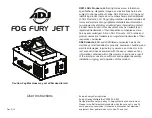
039
040
041
①
②
③
④
⑤
To
loosen
To
tighten
Gathering
Stretching
⑧ ⑨
⑥
⑦
Table 4
Graduation
Differential
ratio
Remarks
S
1:0.8
Stretching
1
1:1
1:1.5
Stitch length: 4mm or less
2
1:2
Stitch length: 3mm or less
Increase
Decrease
5.5 Adjusting thread tension unit
Thread tension varies depending on the type of
fabric, type of thread, sewing width, stitch
length and conditions of use. Adjust thread
tension from the individual thread tension spring
caps.
● To tighten the thread tension, turn the caps clockwise.
● T o l o o s e n t h e t h r e a d t e n s i o n , t u r n t h e c a p s
counterclockwise.
① Left needle thread
④ Top cover thread
② Middle needle thread
⑤ Looper thread
③ Right needle thread
5.6 Presser foot pressure adjustment
Relieve presser foot pressure as much as possible
within a range that keeps the stitch stable.
(1)
Loosen the lock nut ⑦ and turn the presser
spring regulator ⑥.
● To increase the pressure, turn the regulator
clockwise.
●
To decrease the pressure, turn the regulator
counterclockwise.
(2)
Once pressure has been adjusted, tighten the
lock nut ⑦.
5.7 Differential feed adjustment
(1)
Loosen the lock nut ⑧.
(2)
Adjust differential feed with the differential
lever ⑨.
● To make gathering, raise the lever.
● To make stretching, lower the lever.
* Position the lever as suggested by the
r e l a t i o n s h i p b e t w e e n g r a d u a t i o n s a n d
differential ratio in Table 4.
(3)
Once differential ratio has been adjusted,
tighten the lock nut ⑧.
CAUTION
● The differential ratio at the maximum stitch length
of 4 mm is available up to 1:1.5
● At the maximum differential ratio of 1:2, the stitch
length is 3 mm or less.
18
VT2500
5. Proper operation
















































